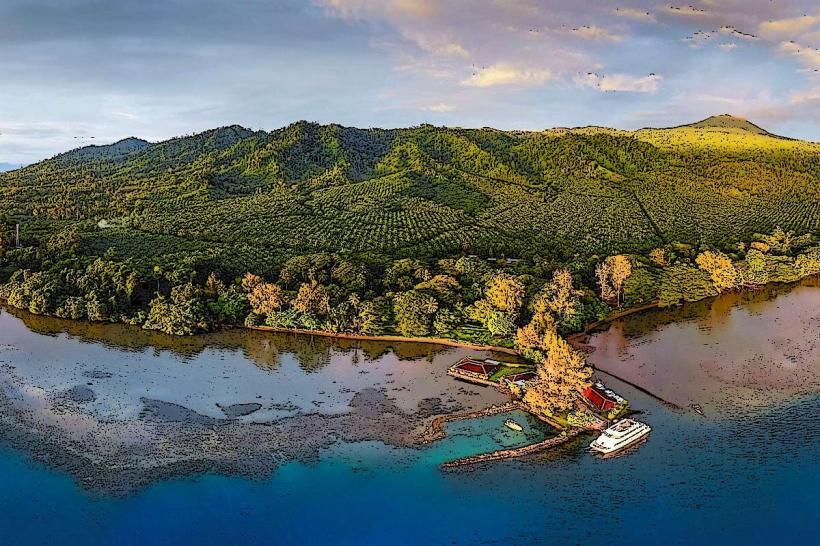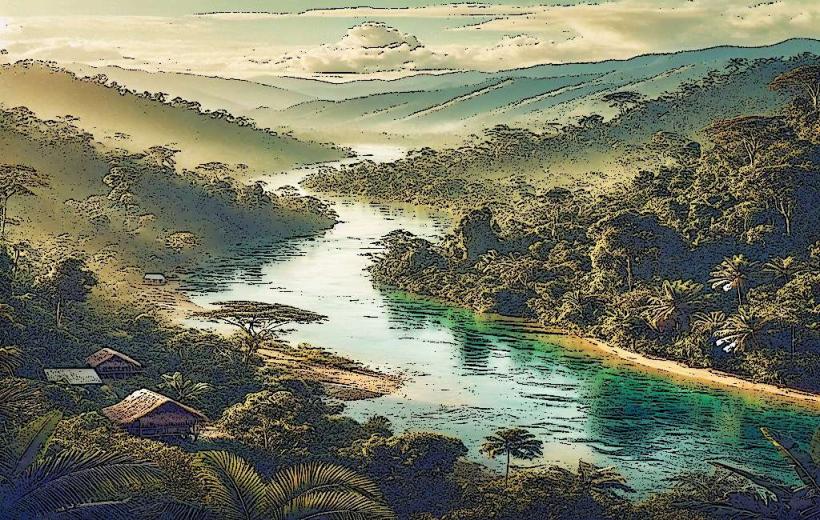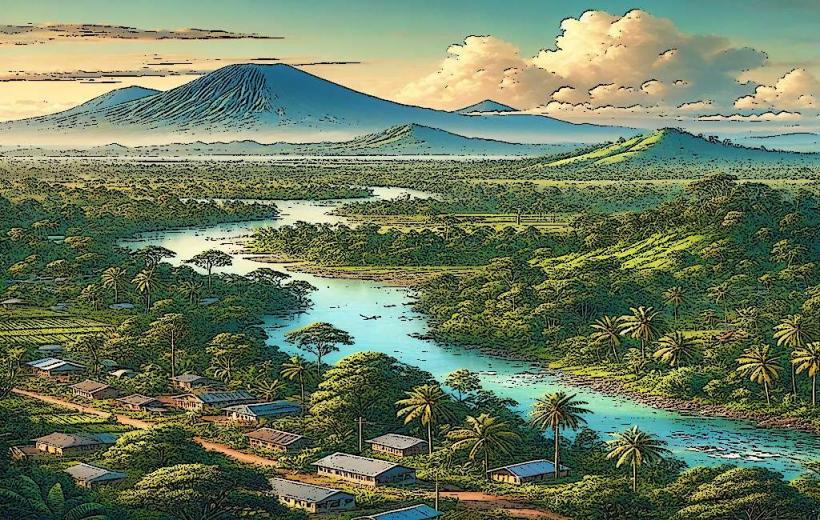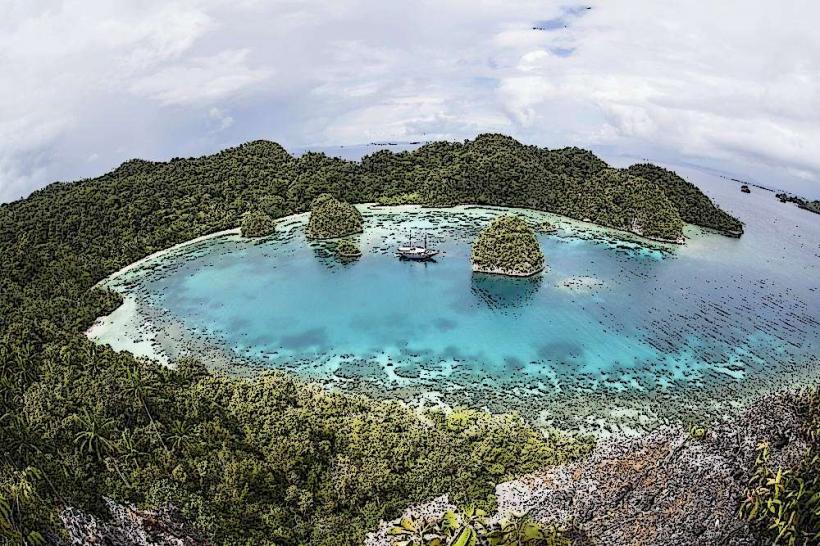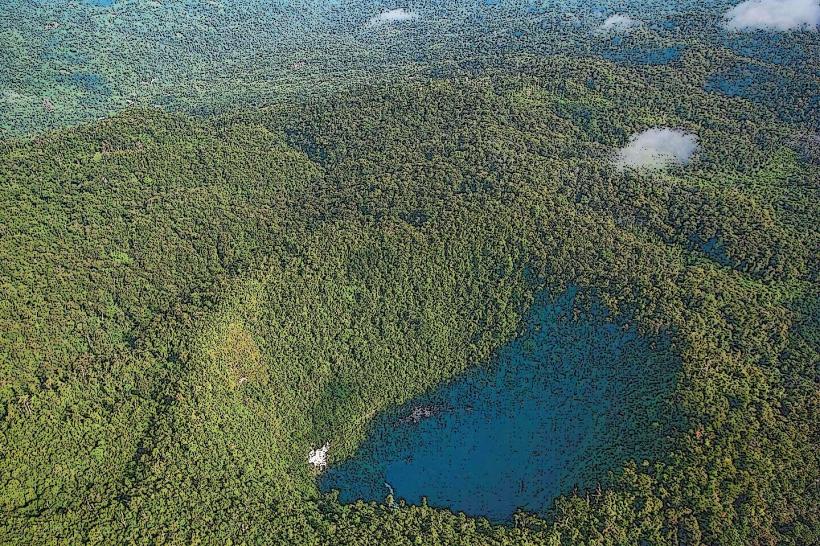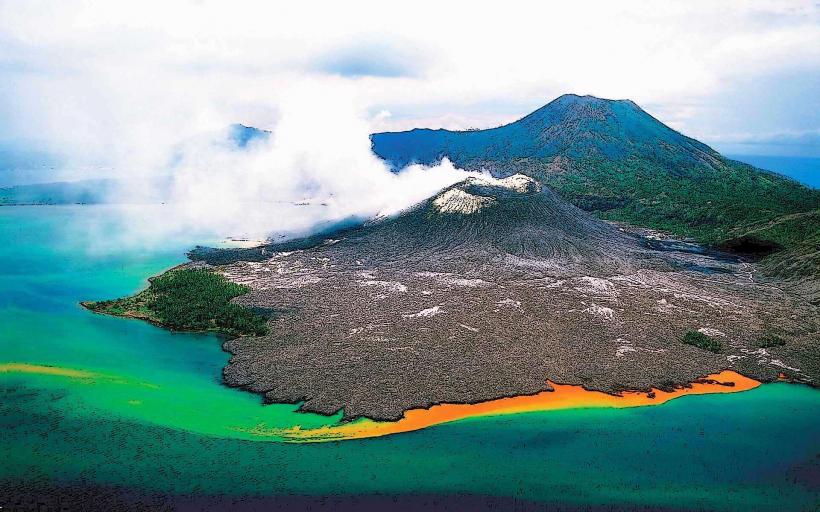Information
Landmark: Mount UlawunCity: West New Britain
Country: Papua New Guinea
Continent: Australia
Mount Ulawun is an active stratovolcano located on the island of New Britain in Papua New Guinea. It is one of the most prominent and active volcanoes in the region, known for its symmetrical cone shape and frequent volcanic activity. Mount Ulawun holds significant geological, cultural, and environmental importance in Papua New Guinea and attracts both scientists and adventure tourists.
Key Features of Mount Ulawun:
Geography and Location:
- Mount Ulawun is located in the West New Britain Province, on the northern part of New Britain Island, which is part of the Bismarck Archipelago.
- It stands at an impressive 2,334 meters (7,257 feet) above sea level, making it one of the tallest volcanoes in Papua New Guinea. The volcano is situated near the towns of Kimbe and Tavurvur, which are within the larger Kimbe Bay area.
- Ulawun’s position along the Ring of Fire, the world’s most active volcanic belt, makes it part of a high-risk area for volcanic eruptions.
Geological Characteristics:
- Mount Ulawun is a stratovolcano, meaning it is built up of alternating layers of lava flows and tephra (volcanic ash and debris). Its symmetrical shape and steep slopes are typical of this type of volcano.
- It has a caldera (a large volcanic crater formed by a major eruption) at its summit, with a number of fumaroles (steam vents) and lava domes that characterize the volcano’s surface.
- Ulawun has erupted multiple times in recorded history, with varying levels of intensity. It is known for explosive eruptions that produce ash clouds, pyroclastic flows, and lava flows.
Volcanic Activity and Eruptions:
- Mount Ulawun is an active volcano with frequent eruptions, including explosive eruptions and lava flows. Its eruptions often pose a threat to nearby communities, wildlife, and the environment.
- Some of the most significant eruptions in recent history include major eruptions in 1970, 1984, and 2019. The 1984 eruption was particularly notable for its large ash plumes and the evacuation of nearby residents.
- Volcanic eruptions at Ulawun can disrupt air travel, agriculture, and local infrastructure due to the spread of volcanic ash over large areas.
- The volcanic ash from Ulawun's eruptions has fertilized the surrounding soil, contributing to the region's fertile land and supporting agriculture, particularly cocoa and oil palm plantations.
Cultural and Spiritual Significance:
- Mount Ulawun holds a special place in the cultural and spiritual beliefs of the local people. Many of the indigenous communities living around Ulawun consider the volcano to be sacred, and it is often associated with various myths, legends, and rituals.
- Some local tribes believe the volcano is inhabited by ancestral spirits, and eruptions are sometimes interpreted as messages from the spiritual realm.
- There are customary practices and rituals conducted by local communities to appease the spirits of the volcano and prevent dangerous eruptions.
Ecological and Environmental Importance:
- The area surrounding Mount Ulawun is rich in biodiversity, with lush tropical rainforests and unique flora and fauna that thrive in the fertile volcanic soil.
- The volcano’s slopes are home to a range of species, including birds, reptiles, and insects, as well as plants that are adapted to the volcanic environment.
- The fertile volcanic ash that settles around the volcano helps support local agriculture, and the surrounding forests provide important habitat for wildlife.
Tourism and Adventure:
- While Mount Ulawun is an active and potentially dangerous volcano, it remains a popular destination for adventure tourism. Visitors can trek up the volcano to experience its rugged terrain, active fumaroles, and sweeping views of the surrounding region.
- The trek to the summit is challenging and requires a good level of fitness. It offers a unique opportunity for travelers to experience the raw power of nature up close.
- Tourists are often attracted by the geological phenomena, such as the lava flows, ash plumes, and volcanic craters, as well as the opportunity to learn about the scientific research being conducted in the area.
Scientific Research:
- Mount Ulawun is a site of ongoing volcanic research, and scientists closely monitor the volcano to study its eruption patterns, seismic activity, and potential hazards. The volcano’s frequent eruptions provide valuable data on volcanic processes, including lava dome growth, ash emissions, and crater formation.
- Research on Ulawun’s eruptions helps to improve early warning systems for future eruptions and mitigate the risks posed to local communities.
Safety and Evacuation:
- Due to its active status, there are evacuation procedures in place for communities living near Mount Ulawun. In the event of an eruption, authorities typically issue warnings and prepare for evacuations of residents in affected areas.
- The Papua New Guinea government, in partnership with geological agencies, regularly monitors the volcano’s activity and provides information to the public about potential risks.
Conclusion:
Mount Ulawun is one of the most active and iconic volcanoes in Papua New Guinea, with a history of explosive eruptions and a significant role in both the local culture and geological landscape. Its towering presence, rich biodiversity, and ongoing volcanic activity make it a focal point for scientific research, adventure tourism, and local mythology. While its eruptions pose challenges to nearby communities, the volcano's influence on the environment and culture cannot be overstated, making it a fascinating natural wonder and an important feature of New Britain Island.


